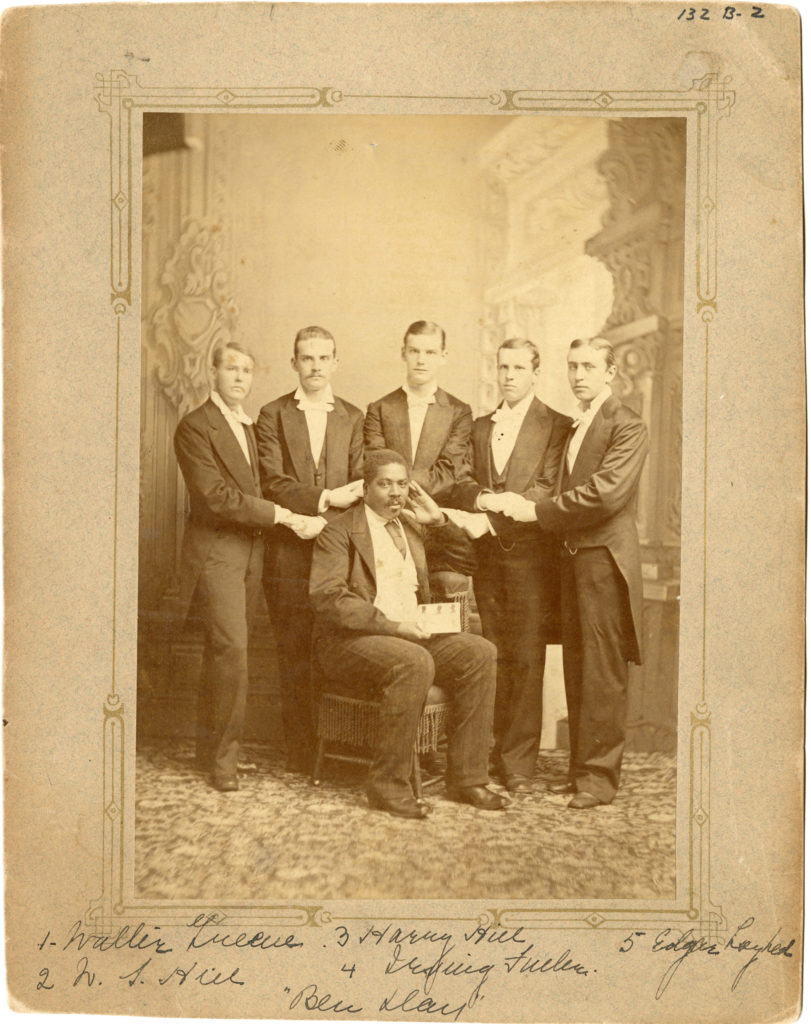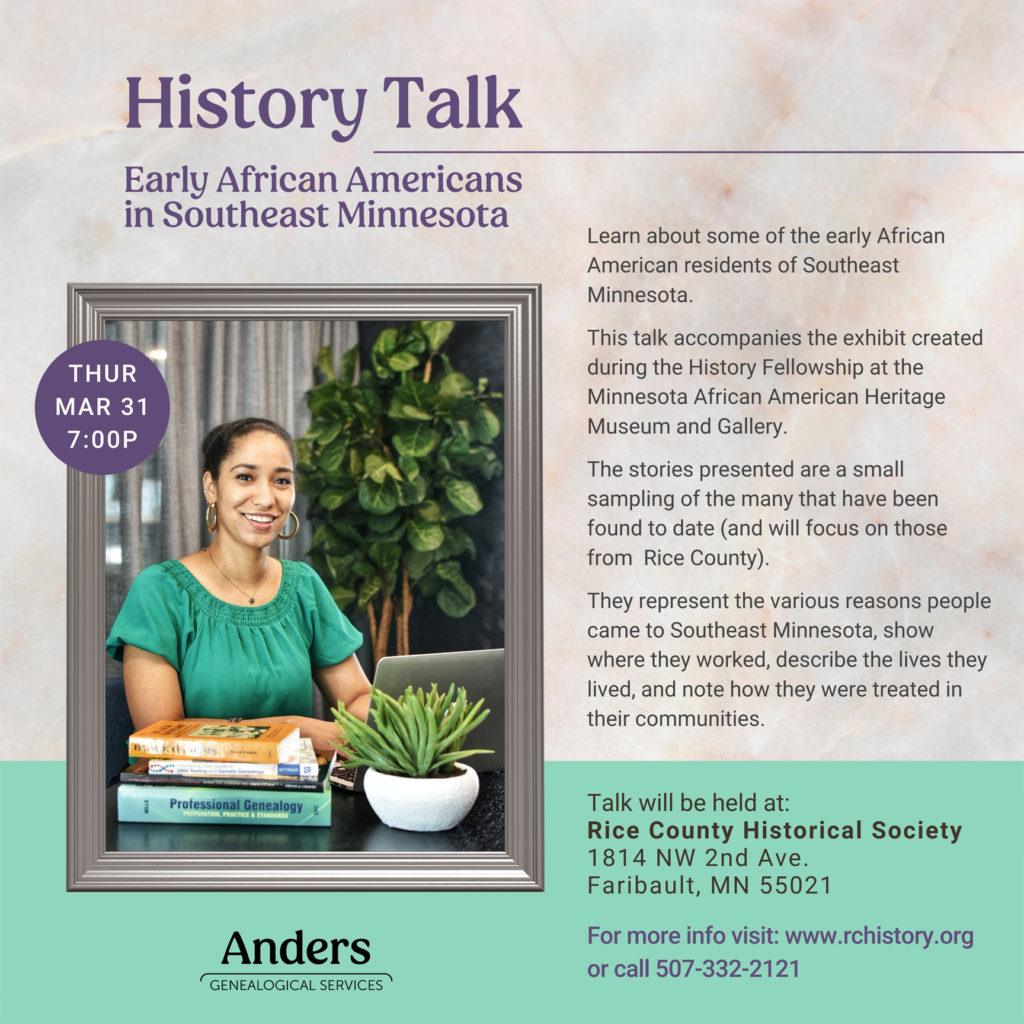Thursday, March 31, 7pm
Mica Anders will present her research on “Early African Americans in Southeast Minnesota” at the Rice County Historical Society Museum, Thursday, March 31, at 7pm. Reservations are encouraged.
Over the last year, Anders has been a Minnesota African American Heritage Museum and Gallery’s History Fellowellowship, exploring “Early African Americans in Southeast Minnesota.” Anders researched at many Southeastern Minnesota Counties, looking through archives, photo collections, school records, and more for footprints of the many African Americans who made this corner of Minnesota their home before the turn of the century.
RCHS was among those counties and although many of the histories of the African American men and women were familiar to us, Ander’s efforts enabled us to discover so much more.
Ander’s initial research included looking through decades of US Census records. She identified more than 70 African American men and women who called Rice County their home between 1857 and 1875. The 1857 censuses revealed that the Adams family of four was the first African American family in Rice County. Just three years later, 11 African Americans were living in Rice County and by 1870, there were 32 African American men, women, and children calling Rice County their home. They were farmers, laborers, students, and business owners living in Northfield, Faribault, and Walcott.
Ander’s research identified the names for us to look for which enabled us to identify Walter Holmes as the first African American student to graduate from Faribault High School, doing so in 1882. Walter continued his education and became a physician, in Ada, Minnesota. His brother, Eugene was the second African American graduate. A member of the Faribault High School class of 1888, Eugene became a dentist in Minneapolis.

We learned more about Ben Day who ran a barbershop in Faribault in the 1880s and who was a member of a local men’s chorus. We learned of Charles and Lucy Wiley who moved to Faribault in 1888 and lived here for almost 40 years. Charles operated a barbershop in downtown Faribault and his three sons joined him over the years until Charles died in 1915. Lucy continued to live in Faribault until she passed away in 1926.
Jeff Sauve’, Rice County Historian, shared his research on John Alfred Boone with Anders. Mr. Boone and his family came to MN from NC in the late 1850s as a part of a group of freeborn African Americans. They settled in Tyrone, Le Sueur. Some of them then moved to Northfield in the 1860s. The Boone’s lived near St. Olaf College and Mr. Boone ran an orchard there.
Thanks to the help of Tom Lamb at the Carelton College Archives, the college shared photos and the biography of Alex Robinson who came to Northfield because of John Boone, who was already living in the area. The two served together in the Civil War. (Robinson’s photo and biography are on the Northfield-Rice County Digital History Collection.) “Alex’s official title was Engineer and Custodian at Carleton; but he was also called Gridley Hall’s watchman, or master mechanic, or ‘Jack-of-all-trades’ at Gridley. Robinson’s story is that he was born a slave in Missouri, in 1844, ran away when the war broke out, became headquarters cook for the 10th Missouri Infantry, and in 1864 enlisted as a private in Co. H, 18th Infantry (colored), in which he served until honorably discharged early in 1866. That summer he married Miss Eliza White, and the pair moved to Northfield a short time later came to Northfield, where he continued to live until his death in 1900. Carleton’s president James W. Strong was one of the members of a quartet that sang graveside hymns at his Northfield cemetery funeral service.”
Although not all of our stories be shared in Anders’ presentation, we are inspired by her work and are dedicated to continuing this important research in Rice County’s Early African American experience.
This program will be held at the Rice County Historical Society at 1814 NW 2nd Ave., Faribault, MN 55021. For more information or to make a reservation, please call us at 507-332-2121.







